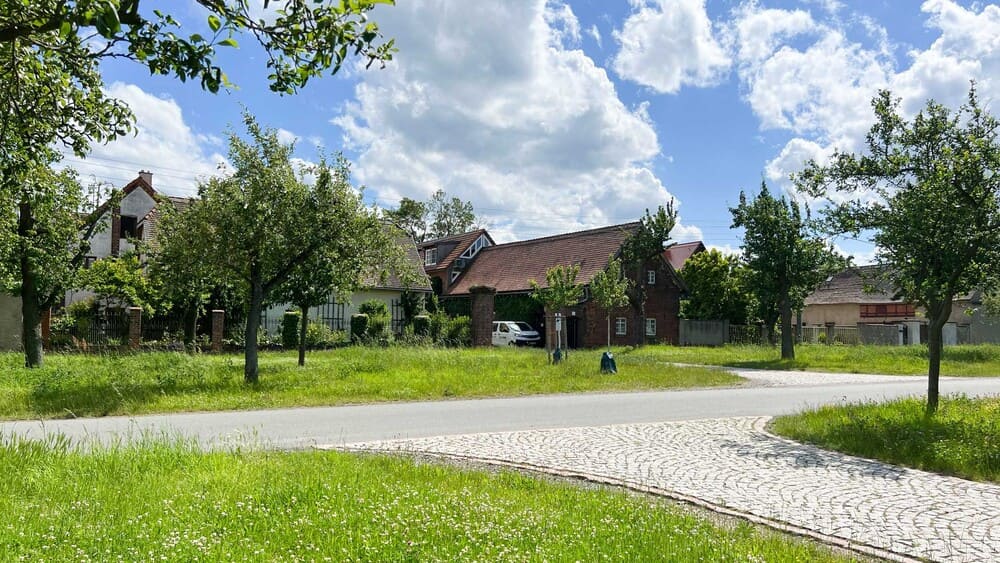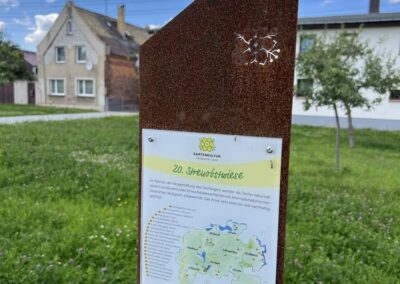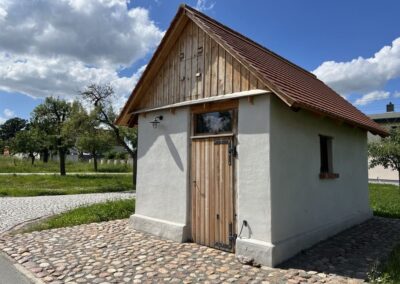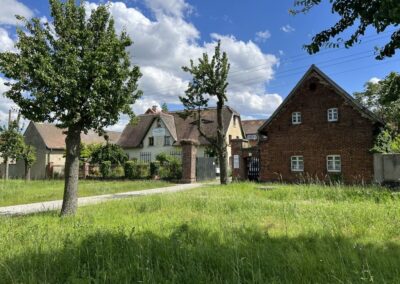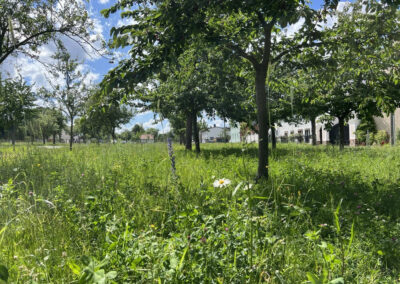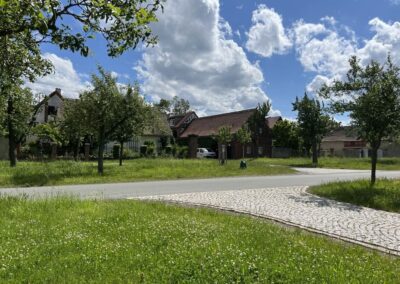Basic info
Country:
Area:
Population:
Density:
Summary:
References:
Keywords
Gallery
"The complex is not a listed monument, but the advice we received from the heritage conservation authority gave us a lot of ideas."
Issues Addressed
The Radefelder Anger project tackled multiple challenges facing this historic 800-meter landscape in the heart of the Saxon village. Central to these issues was the deterioration of this culturally significant space, which is divided by a 14th-century church. Over time, several critical problems had emerged: the village’s heritage fruit trees were aging and declining, the infrastructure had become a problematic mix of paved and unpaved access roads, and two concrete-lined ponds had fallen into disrepair and were heavily silted. Additionally, the community lacked proper gathering spaces for social interaction and village events. These issues not only threatened the preservation of important cultural and natural heritage but also hindered the anger’s potential to serve as a vibrant community centre for village residents.
Approaches and Solutions
The approach taken was notably holistic and community-driven. Rather than imposing solutions from above, the project team engaged local residents through community meetings to shape the development plan. This collaborative approach led to several innovative solutions. The plan called for strategic replanting of fruit trees to preserve historical varieties while ensuring future generations would enjoy their harvest. Access roads would be thoughtfully redesigned, removing unnecessary sealed surfaces while improving essential pathways. The concrete ponds would undergo ecological restoration, transforming them from eyesores into vibrant aquatic ecosystems.
Actors and Stakeholders
Various actors and stakeholder groups were involved in the development process. The village community actively participated in all planning steps, while the municipal administration served as project manager. Essential support came from the “Vital Village Centers” funding program. Nature conservation experts contributed their expertise for ecological enhancement. Local farmers and fruit growers handle the practical implementation of maintaining the orchards.
Challenges and Opportunities
The development process was marked by several central challenges. Particularly demanding was striking the balance between nature conservation and modern usage requirements. The aging fruit tree population required well-thought-out replanting concepts. Disorganized parking and infrastructure in need of renovation demanded new solutions. The silted ponds also required fundamental rehabilitation. These challenges were addressed through intensive citizen participation and a sophisticated development concept. The integration of various usage requirements in harmony with the historical character remained consistently at the forefront.
Outcomes and Lessons Learnt
The project’s benefits extend far beyond physical improvements. By preserving historical fruit varieties and creating new wildlife habitats, the project protects both cultural heritage and natural diversity. The redesigned space promotes community interaction while maintaining ecological balance. The key lesson from the Radefelder Anger project is the power of integrated planning that balances preservation with progress. By bringing together historical preservation, ecological enhancement, and community needs, the project demonstrates how rural development can serve multiple objectives simultaneously. The success of the community engagement process shows that local knowledge and preferences are crucial ingredients in sustainable development.
This project offers a compelling model for other communities facing similar challenges. It shows that with careful planning, community involvement, and a balanced approach to development, historical landscapes can be successfully adapted to meet contemporary needs while preserving their essential character. The Radefelder Anger revitalization stands as a testament to how thoughtful development can unite rather than divide, preserve rather than destroy, and enhance rather than diminish the natural and cultural heritage of a place.
Selected major projects and awards
- Redesign of green spaces, paths and ponds (2019 – 2022)

